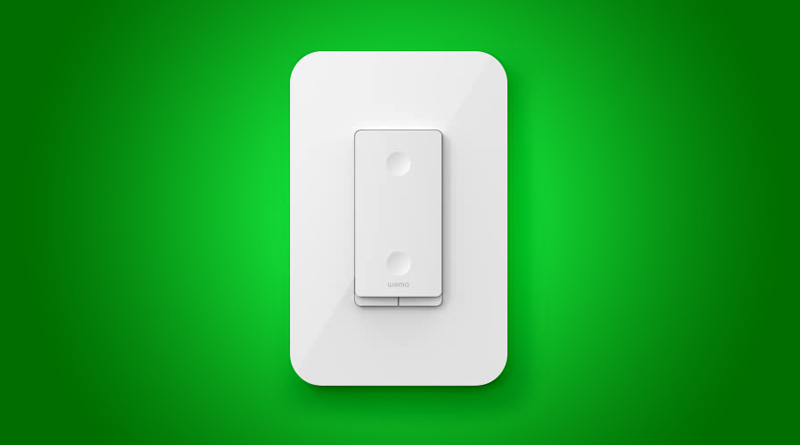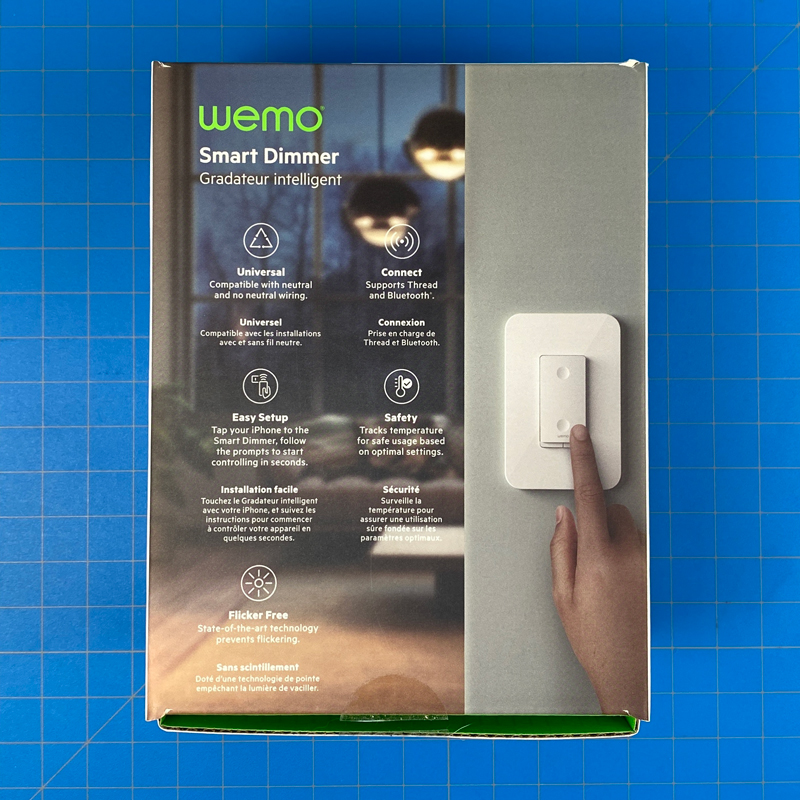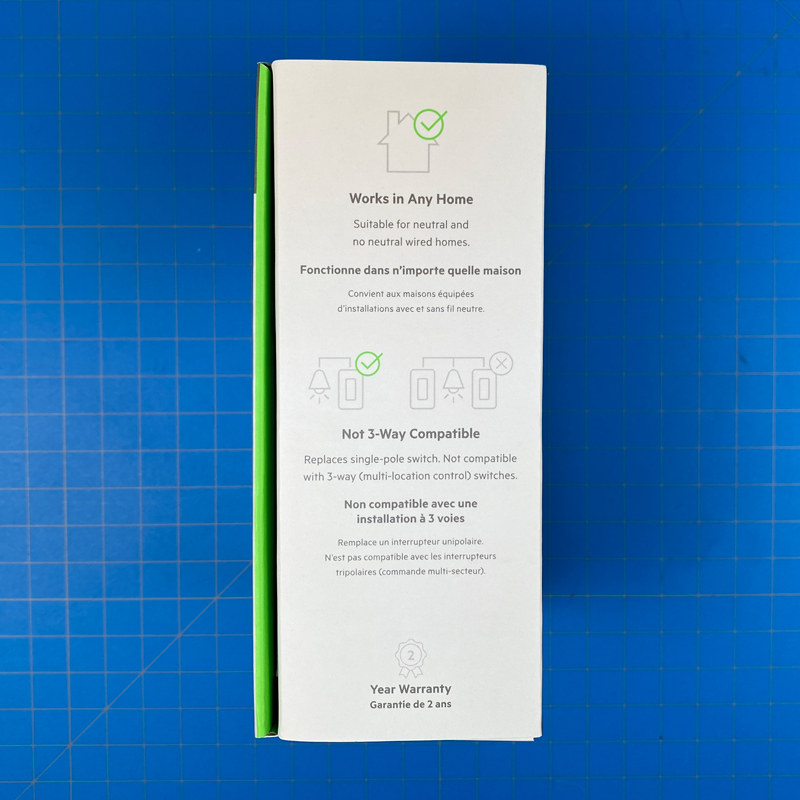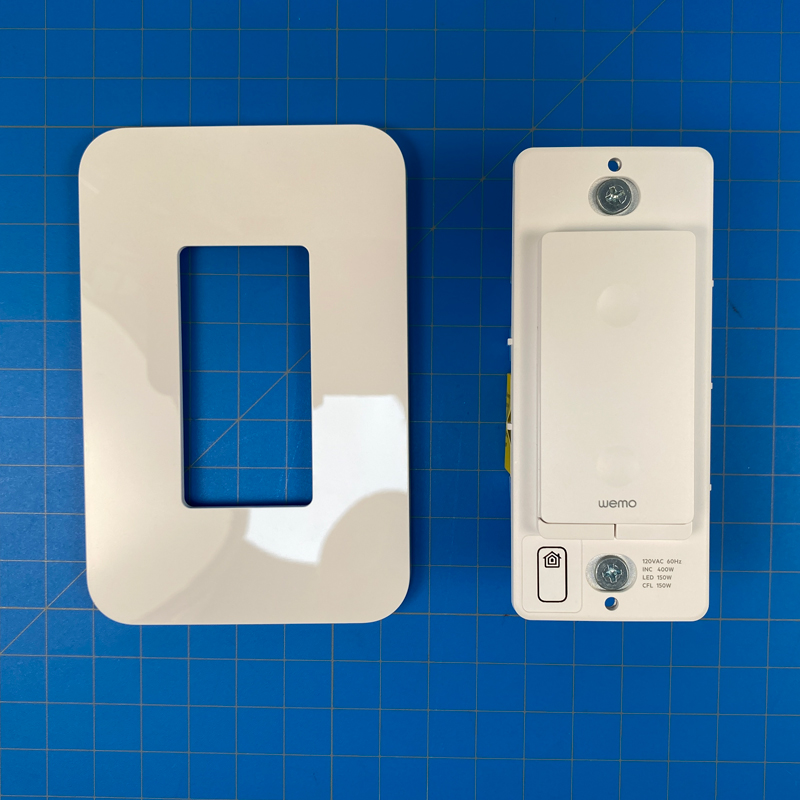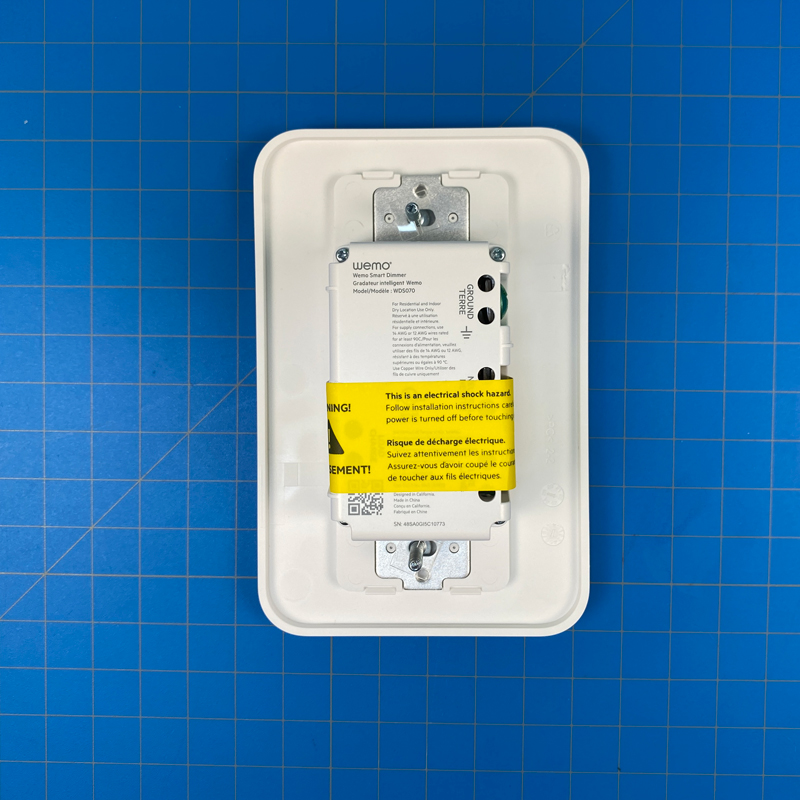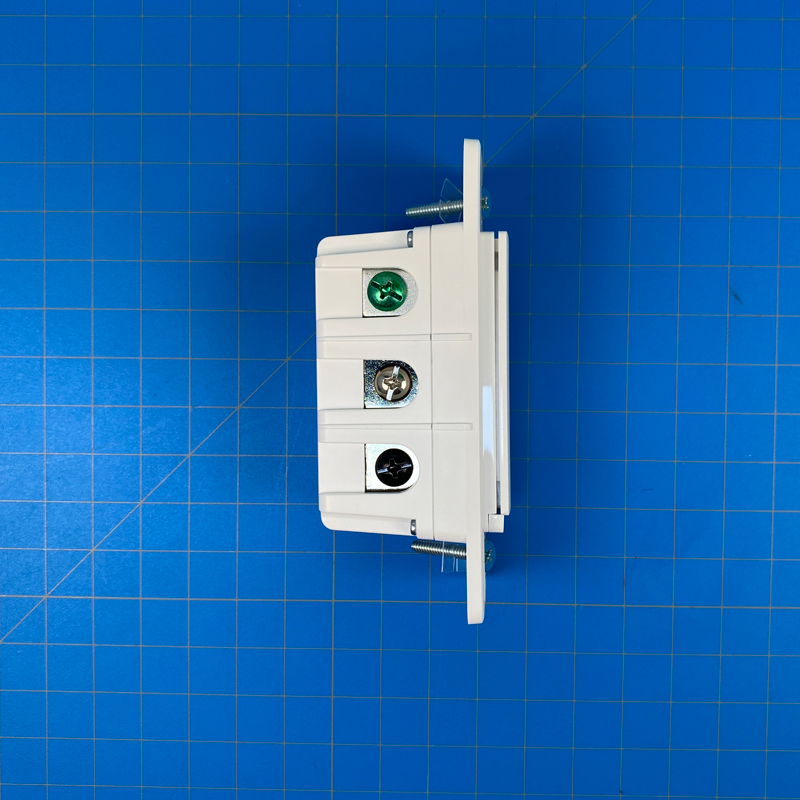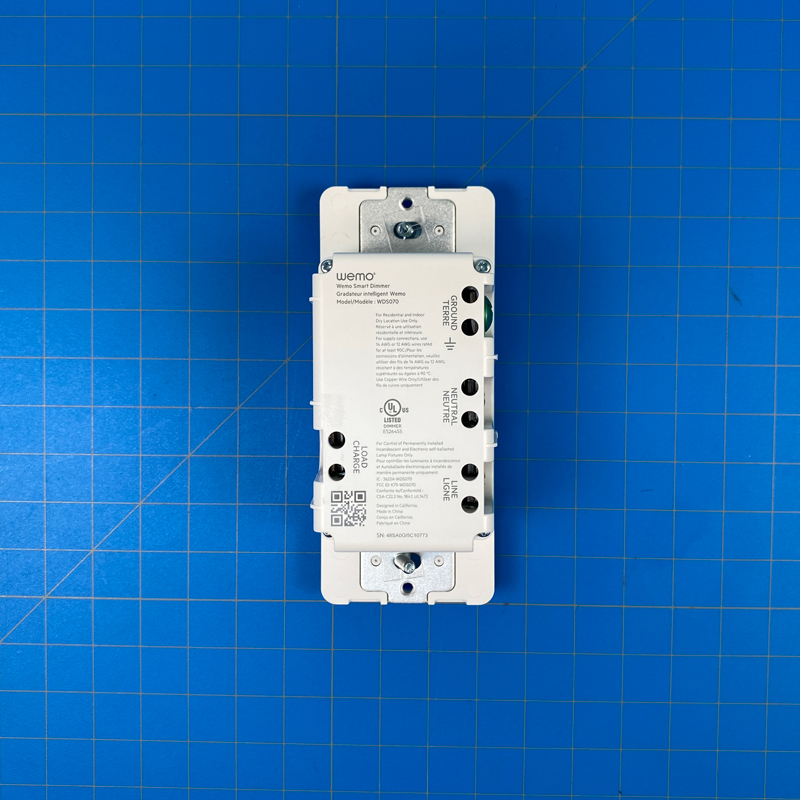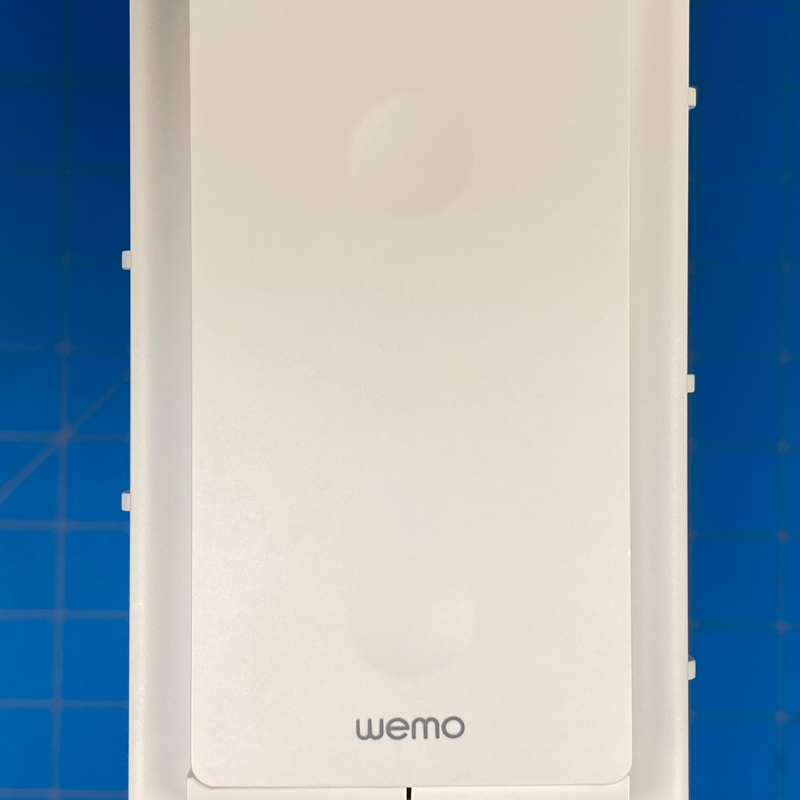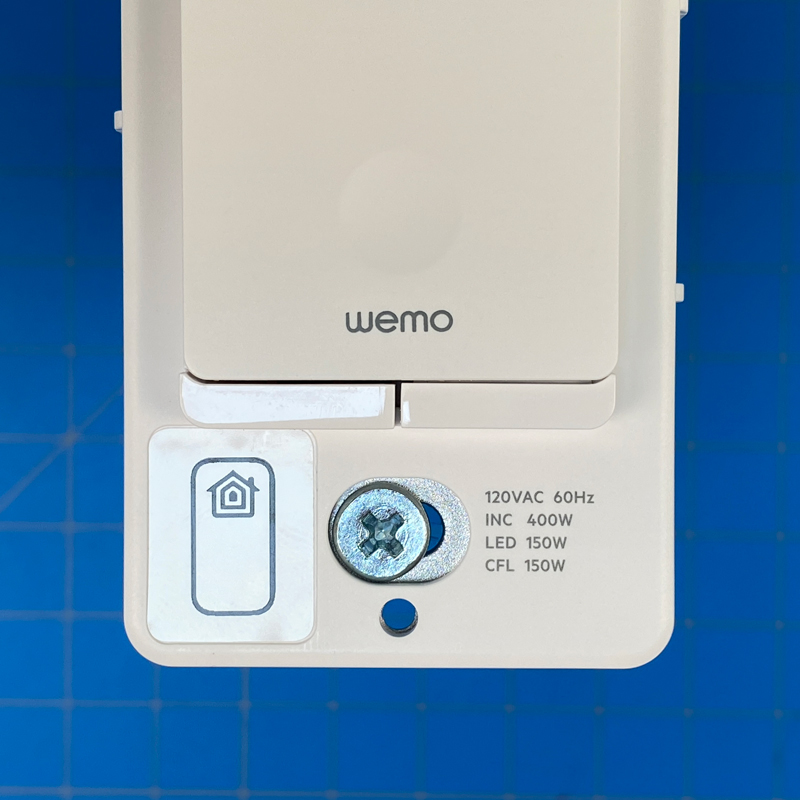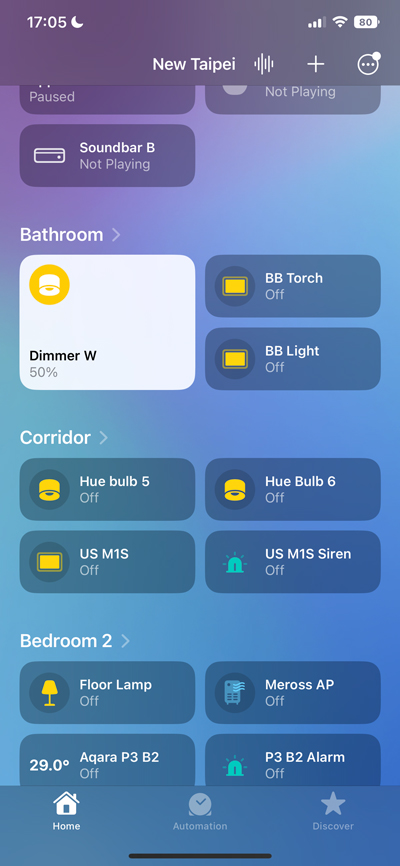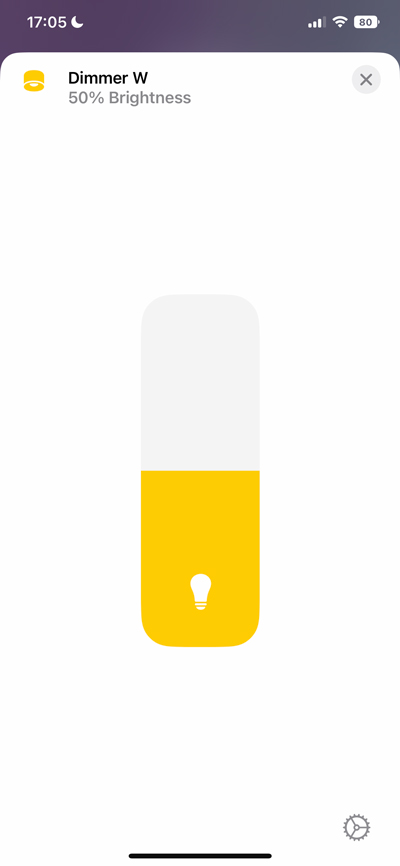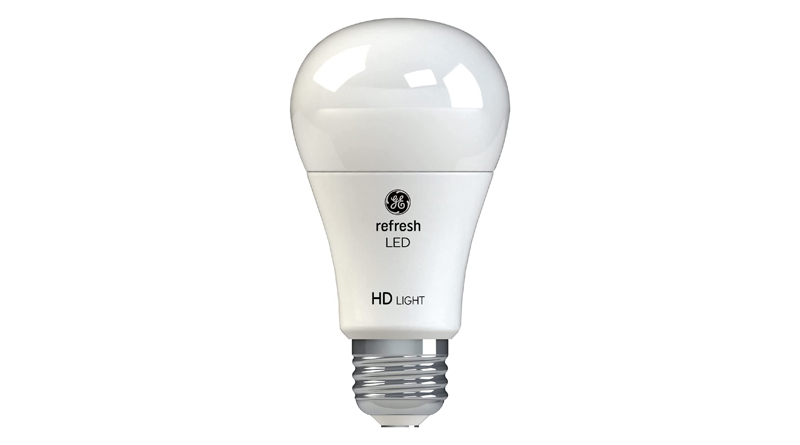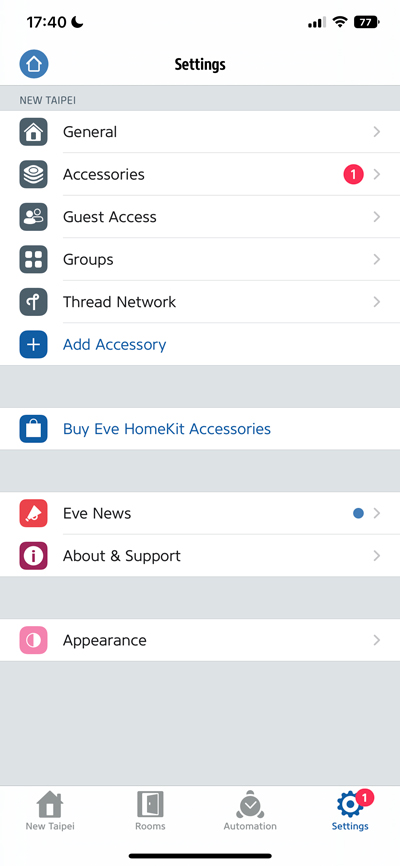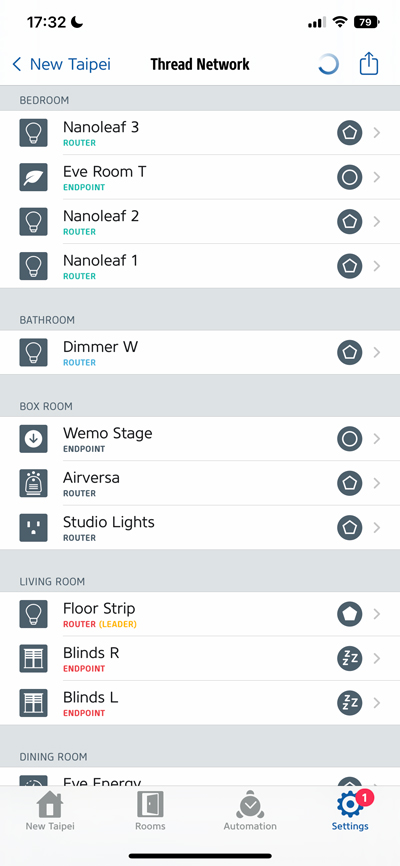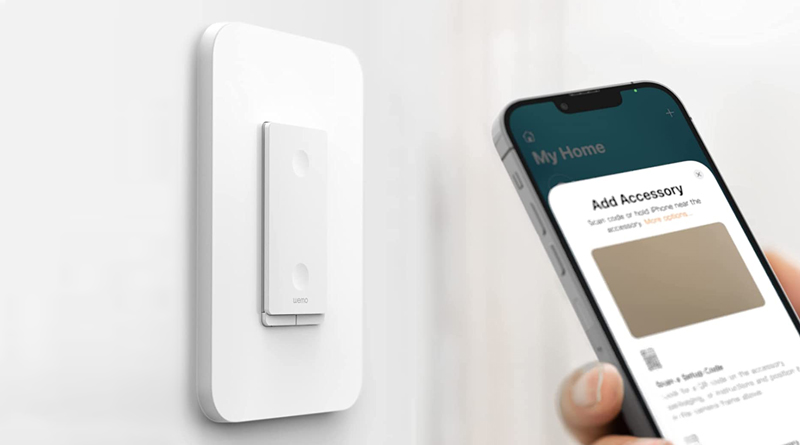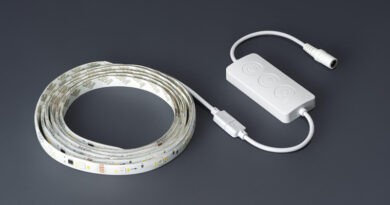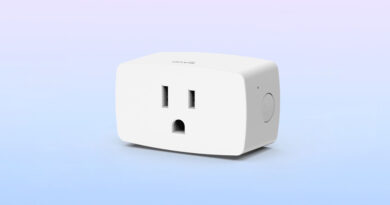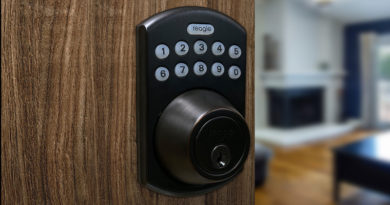Wemo Smart Dimmer with Thread (review)
Maybe only a couple of years ago, if you were using HomeKit and wanted a smart dimmer switch, your options were a bit limited – especially in Europe, although that’s a different story. Not a lot has changed since then; there are definitely more dimmer options available than before, but if you wanted a dimmer switch without neutral, your choices are still very limited. So, when Wemo announced not only a smart dimmer switch that could work with or without neutral but also came with Thread, I was very interested.
Strangely enough, there aren’t a lot of uses for dimmers in our home, which is usually taken care of with smart bulbs that also offer colour, but the one place where it’s specifically required is the bathroom. More on that later, but today we’re looking at the Wemo Dimmer to see why I consider it a great option, despite one seemingly large downside. Read on…
PACKAGING
Wemo has gotten their look down when it comes to presentation, with the signature luminous green ever-present, although more subtly featured on the inside of the box in this case. The front of the box features the switch, along with the ‘Built on Thread’ and ‘Works with Apple HomeKit’ badges. The top corner states this will only work with Apple HomeKit, so no Amazon or Google option here, which is in line with their other Thread-enabled devices – the Wemo Smart Plug (review HERE), and Wemo Stage Scene Controller (video HERE, review HERE). The rear of the box highlights the features of the dimmer, whilst one side goes into a little more detail, with the other side giving you the basics – it works with or without a neutral, but is not 3-way compatible. You don’t get a lot in the box, just a fold-out manual in English and French, the switch itself including a faceplate, and a jumper wire for those using neutral, that comes with a wire nut.
THE SWITCH
The Wemo Dimmer comes with a faceplate as standard, although like was the case with the Stage Scene controller, they don’t quite match visually, with the switch utilising matte white plastic, and the plate glossy plastic. It’s not the end of the world, however, as the size of the switch will fit any standard decora plate. Removing the plate is easy enough, which reveals the two standard screws for securing it to your switch box, as well as a HomeKit code.
For the particular location this switch was destined, I found that the screws were a little on the short side, although that may not be the case for you. I simply used my existing screws, so it wasn’t an issue.
I already have some Aqara wall switches in the home, which have actually been great (video HERE, review HERE). The only issue with them – which to be fair is a problem for many other switches as well – is that they come with their own wires connected to the switch, that then have to be connected to the wires in the switch box with the use of wire nuts or similar. With space in the switch boxes already at a premium, along with smart switches being deeper than a standard switch, these wire nuts take up valuable room. Not so with the Wemo, as you can fix the wires in the switch box directly to the switch. Not only that, but you have two ways in which to connect the wires – either via the screws on the sides, by winding the ends of your wires around them, or via the holes in the back of the switch, that are secured with the aforementioned screws as well. These options (I went with the latter) make fitting the switch a lot less finicky, so I’m really happy they offered both solutions here.
The Main part of the switch has two dimpled buttons that turn the light on or off with a simple short press. A long press dims or brightness the lights depending on which button you press. A double press on either button sets the lights to custom brightness levels, which I’ll go into in a bit.
There are two buttons underneath the main switch, although only one of them is an actual button. The one directly above the HomeKit code is actually a tab that can be pulled out. This is for times when you want to disconnect power going to the bulb sockets when swapping bulbs out. The switch itself stays connected, however, but is non-functional until you reseat the tab.
Even though you can adjust the brightness of the lights by long pressing on either button, you can actually set a custom brightness level for both minimum and maximum brightness. This might sound like an odd feature, but for bulbs that might be brighter than needed at their highest level, or even too dim at their lowest, you can set your own limits, which can still be overridden by long-pressing anyway.
To do this you utilise the small left-hand side button below the main switch in combination with the up or down switches to set the relevant levels. Once these levels are set, you can then activate them by double pressing on the top (on) button to get to the custom maximum level or the bottom (off) button for the custom minimum level.
This brings me to the reason for specifically wanting the dimmer in the bathroom; At night if either my wife or I need to take a ‘trip’ to the bathroom, I prefer to have some light, but low, whereas my wife prefers no light on at all. Because the motion sensor can’t possibly detect who’s who when one of us enter the bathroom, the light has to be manually operated, so if I’m there I can double tap on the ‘off button’ to get to the dim level I’m happy with, whilst my wife doesn’t need to do anything at all. If for any reason she needs to turn the light on, when she presses ‘on’, it’ll still be at a low level due to a previously set up automation. This essentially allows us to have individual brightness levels at night – my preferred brightness when double pressing the ‘off’ button, and a low (but different) brightness level when my wife presses the ‘on’ switch.
These custom presets can only be set up on the device itself, as the switch isn’t compatible with any Wemo apps, and as it only works with Apple HomeKit, the framework to set this kind of thing up via software isn’t available in HomeKit.
Installing the switch does require a basic understanding of electricity and switch wiring, so I’m not going to cover this, as it would be better to consult a professional if you’re not sure, but in Taiwan, switches don’t come with either a neutral wire or even earth, so for me, it was very straightforward to fit, with just two wires to contend with.
IN THE HOME APP
Adding the Dimmer to HomeKit is easy, as expected, so I won’t be going into the details here, but as the switch uses Thread, you don’t need to be on a specific WiFi band in order to add it, seeing as it doesn’t use WiFi. When adding, you can tap in the HomeKit code although you can’t scan it, as the order of the numbers isn’t laid out in the standard two rows of four digits, and there’s no QR code, but it also has NFC pairing, which works great if your phone supports it.
The Wemo dimmer, as already mentioned, is exclusive to HomeKit, so there’s no third-party app to concern yourself with, or set up an account for. This means any future firmware updates will appear directly in the Apple Home app. This has already been the case when Wemo issued an update for the Stage Scene Controller that added Thread support.
As of iOS16, you no longer have to long-press the tile to access the dimmer slider. To turn the light on or off, you tap the icon within the tile itself, whilst tapping the tile anywhere else opens up the slider control, and by extension, the automations section and any settings.
SUITABLE BULBS
The Wemo dimmer needs dimmable ‘dumb’ bulbs in order to work effectively. You can’t use smart dimmable bulbs, and standard non-dimmable bulbs won’t work either. It’s also important to note that whilst it can work with dimmable bulbs, they’re not all the same. dimmable bulbs aren’t impossible to find here, but they’re not that common either. Luckily (or so I thought at the time…) Ikea sells dimmable bulbs made by Osram. However, soon after these were fitted it became clear they weren’t suitable. The brightness, at 1100lm, was great, but the difference between the lowest level they could reach and the brightest level was not impressive at all. I would say at the lowest level available, it looked like the lights were at 70% brightness, which is garbage, to put it mildly. On top of that, for whatever reason, the lights (there are two in the bathroom), would occasionally strobe really wildly until I turned the switch off and on again. It was clear there was a problem which I hoped was the fault of the bulbs – which turned out to be exactly the case, I’m glad to say.
After watching Shane Whatley’s review of this switch, I could see he was able to get much lower brightness levels, and after speaking to him, I decided on the same GE bulbs he tested, which have been a LOT better (I would say, the difference was ‘night and day’, but that would be corny, right…?). Needless to say, it’s best to shop around or better still stick with the brands and models recommended by Wemo themselves, based on their tests.
THREAD…NO MATTER
We’ve not gotten into Thread yet, but this does indeed use the ‘new protocol on the block’ and works really well. To check that the switch is using Thread (as opposed to Bluetooth, which is the fallback connection method), you can use the Eve for HomeKit app. In the Settings, there’s a section specifically for your Thread network. As you can see in the second screenshot, my Dimmer is listed (‘Dimmer W’), and in the settings for the switch, you can see that it’s using Thread as its method of transport. It’s also interesting to note that it can act as a Thread Router, which allows it to both spread the reach of your Thread network, as well as act as a relay for Thread devices that aren’t near enough to a Thread border router. For a switch without neutral to be able to perform such a function was a pleasant surprise, as Zigbee switches without neutral, like those by Aqara, can’t be used as Zigbee repeaters.
I mentioned at the start of the review that there’s a “seemingly large downside” to the switch. This is the fact that whilst it uses Thread, Wemo has stated from the outset, that this switch will not be able to work with Matter, and any firmware updates won’t include such support. I for one am not phased by this; even though Matter is on the cusp of finally becoming a reality, I am pretty certain that we won’t see anything even remotely close to a changed landscape, where everything – or even a fraction of current devices – magically become Matter compliant. Notable exceptions might be products by Eve, who’ve made sure they’re ready for Matter’s arrival. The reason I’m not phased is that from my perspective, Matter is largely going to do for Amazon and Google users, what HomeKit already does to a large extent – local control. On top of that, even though I do have a couple of Google smart assistant devices around the house, and can make use of Alexa built into my Ecobee SmartCamera, I’m pretty much firmly in the HomeKit camp, and as such this switch not having Matter isn’t going to make any real difference to me and my setup.
Of course, there may be a time when Matter becomes more of a requirement, but then I’ll wait for that day to come, and take the appropriate action. On the flip side, if you want to be ‘futureproof’ to some extent, which I can understand, then Wemo has also stated that a Matter version will come, although when it will arrive and whether it’ll cost more, we simply don’t know.
PERFORMANCE
Simply put – once I was able to fit decent dimmable bulbs, the switch has been excellent. Prior to fitting the switch, I was using two Hue bulbs in combination with a Runlesswire wireless dimmer switch (Friends of Hue and HomeKit compatible) and a Hue motion sensor, along with a standard Hue Dimmer switch on the outside of the bathroom. You wouldn’t be surprised to figure out that with all of these working in Hue, and motion sensor automations all programmed in the Hue app, things would be snappy. They were, and I’ve no complaints there, but I was surprised to find how fast the Wemo dimmer worked in combination with the Hue motion sensor, and the Hue dimmer switch – they were extremely fast and responsive! The reaction times for the Hue wireless dimmer turning on the Wemo dimmer switch in particular were excellent. I didn’t expect them to be as fast as an ‘all Hue’ setup, but they seem easily as fast to me, so I really have no complaints. Is this due to iOS 16, Thread, or a combination of the two? I don’t know, but I’m more than happy with the snappy response times.
as it’s sort of a toggle switch, it’s not the same as an Aqara switch, where you press it wherever and it’ll turn on and off, so in the case of the Wemo dimmer, you do have to press the right ‘dimpled’ button to turn it on or off, but given that I’m using a motion sensor to do this anyway, it’s actually a non-issue for the most part.
Do I like the design? Yes, it’s certainly uncluttered, and I was a fan of the aesthetics of the Stage Scene Controller, so as this follows the same design language, I’m quite happy with it. The only thing I would question is why they went with glossy plastic for the face plate when the switch is matte plastic.
Although I’m probably going to stick with just the one dimmer for now, as we have a second bathroom, I am tempted to get another one, and I’m not concerned about the lack of Matter support either. Instabuy!

